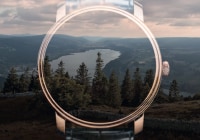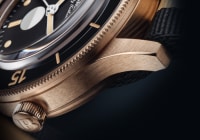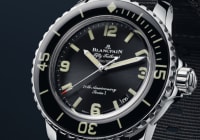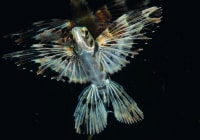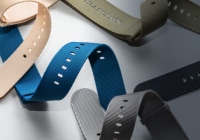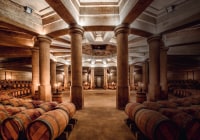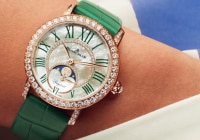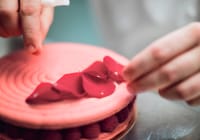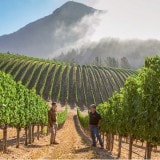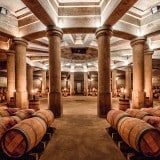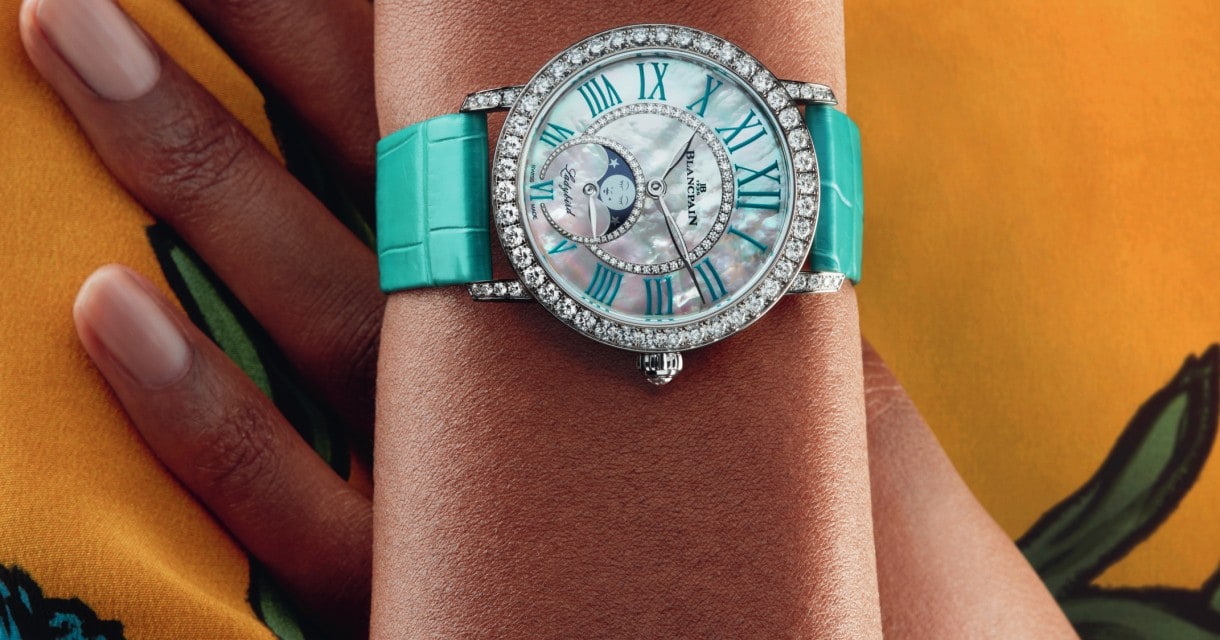
Search in Issues
Chapters
List of parts
Chapter 7
Château LAFITE ROTHSCHILD
Crowned the “King’s Wine” in the 1700s, Château Lafite’s standing has only grown since that time.
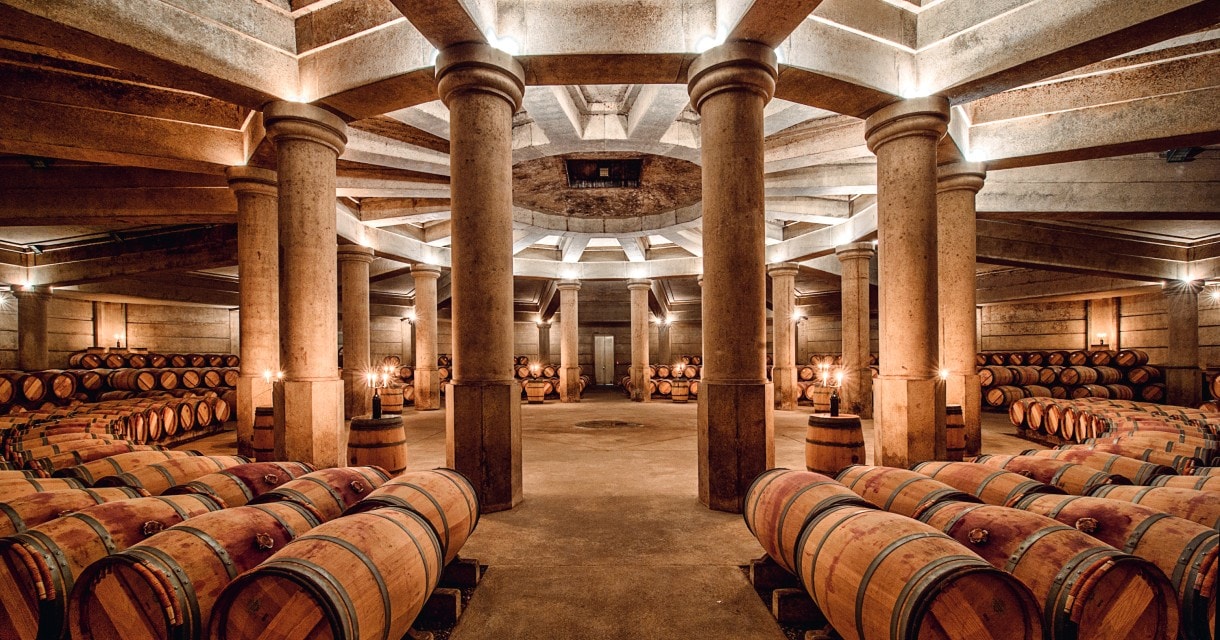
Château Lafite Rothschild is present on every wine aficionado’s “WHO’S WHO” list.
Oenophiles pride themselves on their ability to reel off the names and appellations of the world’s finest wines: all the Bordeaux first growths, the stars of the right bank, Burgundy’s grand cru treasures and the flagship domaines, the three LaLaLas of the Rhône, California’s most impossible to find boutique wineries, the Super Tuscans, Australian Shiraz. Château Lafite Rothschild’s presence on every such wine aficionado’s “who’s who” list is not surprising. What is perhaps an even greater achievement is its profile in the minds of the greater public. Well before many have even heard the names of the great Burgundies, garagiste Californians, the LaLaLas or Super Tuscans etc., the name Château Lafite has registered in consciousness as occupying the summit of fine wine.
What accounts for Lafite’s prominence? How has it achieved such transcendent notoriety that it is reverently spoken of even by those who have never experienced it? In many ways, the answer is almost trivially simple: uncompromising excellence over hundreds of years. Although vines on the property can be documented dating to 1234 and even the name “Lafite” derives from the ancient French word of that era (“fite” meaning a hillock), the true glory of Château Lafite seems to have begun in the 17th century when the estate was purchased by the Ségur family. With the château already standing on the property and some vines planted, Jacques de Ségur greatly expanded the vineyards in 1680, which truly marks the beginning of the estate’s upward arc. Improvements in wine making occurred during the 1700s under the direction of Nicolas-Alexandre, Marquis de Ségur, following which the wine was crowned as the “King’s Wine”, with the Marquis cleverly anointing himself with the somewhat lesser title of the “Wine Prince”. In no small measure, those titles were the result of the influence and able advocacy of the Maréchal de Richelieu, who is reported to have exclaimed to King Louis XV, “I have discovered the Fountain of Youth. I have found Château Lafite’s wine to be a delicious, generous cordial, comparable to the ambrosia of the Gods of Olympus”. This led to Lafite finding approval by the King and favor widely within the Versailles royal court. Prominent social luminaries, such as Madame de Pompadour and Madame du Barry, became devotees: Madame de Pompadour served it at her receptions; Madame du Barry esteemed Lafite as her only wine. This extraordinary profile extended well beyond Versailles, as it traversed the Atlantic and attracted the attention of the American President Thomas Jefferson, who visited the château and became a client.
The references of the King’s Wine and Wine Prince initially establishing an unmatched cachet did have a downside when the “anti- everything royal” terror of the French revolution reached Bordeaux. A guillotine blade brought the Ségur era to the most abrupt of ends in 1794. The property plunged into the abyss of public ownership.
Fortunately, the public ownership was short lived as Lafite was sold to a Dutch consortium. Over the next half century, in what has since evolved to be one of the most important and enduring honors in the wine world, Lafite was selected along with Château Latour, Château Margaux and Château Haut-Brion as a first growth (the highest level) in the 1855 classification of Bordeaux wines. Not only was Lafite placed on this elite rung, one of the leading négociants (wine brokers) placed it at the top of the list, finding it “the most superb of all the Médoc”. A testament to the merit of this original classification is the fact that only a single change has been made in the 170 years that followed, with Château Mouton being added to the ranks of the top Bordeaux, bringing the total number to five.
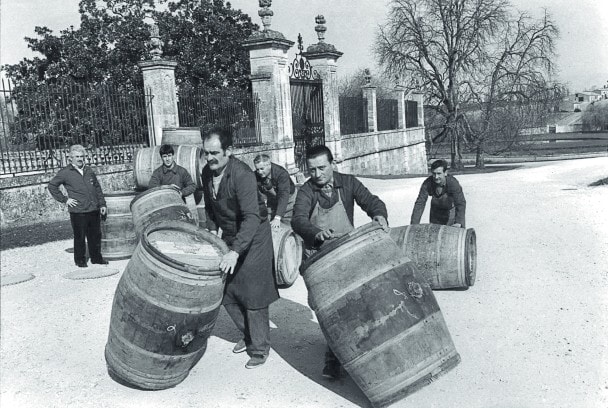
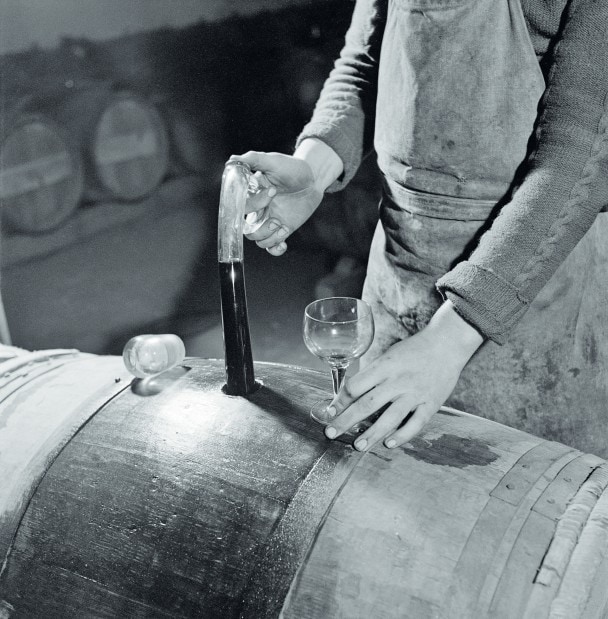
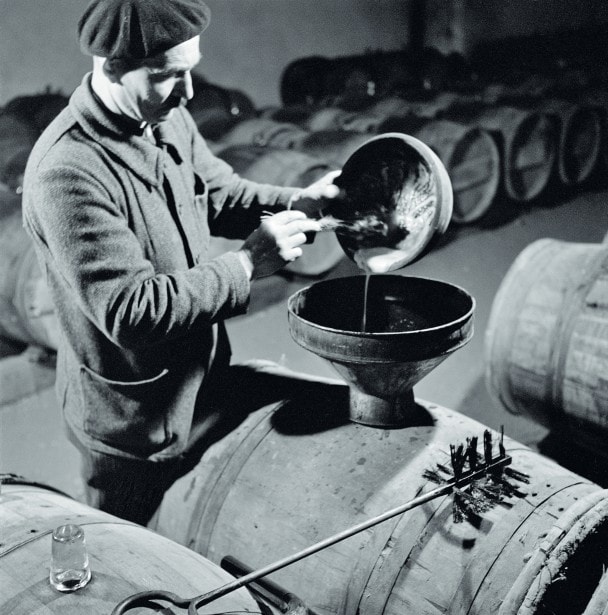
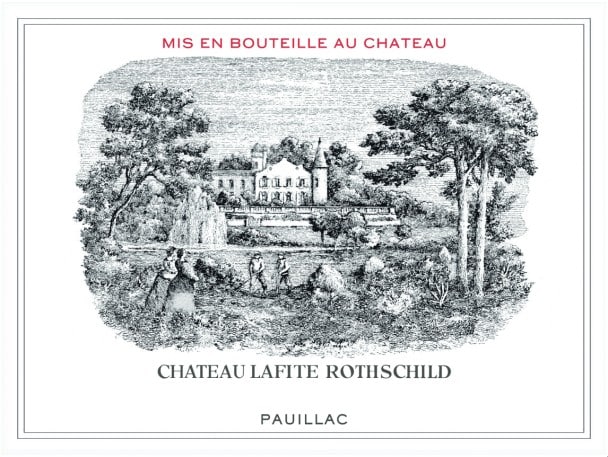
The path from the Rothschild family’s purchase of the estate to the present WAS NOT WITHOUT ITS CHALLENGES.
Following this interlude of ownership by Dutch merchants, Lafite was purchased by Baron Jakob (often referred to as “James”) Mayer de Rothschild in 1868. James was one of five sons of Mayer Amschel Rothschild. The five were dispatched throughout Europe to expand and fortify the family’s banking empire, opening branches in Paris with James as well as in London, Vienna, and Naples. Today, the five are remembered in Lafite’s cellars with a coat of arms that symbolizes the brothers via five arrows crossed within a crown.
The path from James Rothschild’s purchase of the estate to the present was not without its challenges. The greatest, of course, was World War II. Compared to other wine regions in France, Bordeaux was spared the worst of the ravages. Whereas wholesale looting of old vintages in cellars throughout Burgundy and Champagne, for example, marked the period, the weinführer for Bordeaux, Heinz Bömers, who, as a wine merchant, had an extensive history of business dealings with the châteaux and brokers in the region, for the most part blocked Bordeaux cellar thefts. Nonetheless, the Rothschild family fled before the occupation, which was to see the Nazis seizing and inhabiting the château. The family remained away until the end of the war.
Today, the leadership of Château Lafite has passed between another two generations of Rothschilds, as Baron Éric de Rothschild has ceded control to his daughter, Saskia. Although Éric is present at the estate, he proudly maintains that Saskia is officially number one and that he no longer has a management role. Illustrating the succession, during our visit the Baron showcased a bottle of 2019 Château Rieussec, an extraordinary Sauternes owned by the family. Saskia is in the vanguard of a movement promoting Sauternes as an aperitif. Highlighting that a bottle of Sauternes, unlike champagne, can be enjoyed over several days, the Baron demonstrated Saskia’s innovative cork system that facilitates reclosing a bottle once opened. With a twinkle in his eye, he recounted his first reaction when Saskia first proposed the new closure. His initial verdict: “absolutely no”. But as she is now the leader, she implemented it nonetheless and for that he admires her.
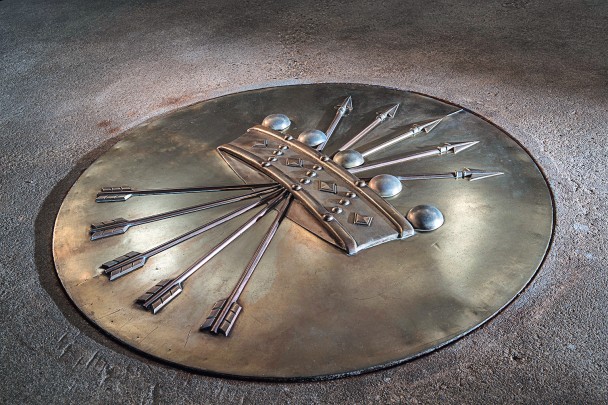
The five descendants of Mayer Amschel Rothschild are remembered today on a wall plaque in the cellars. Each arrow represents one of his sons.
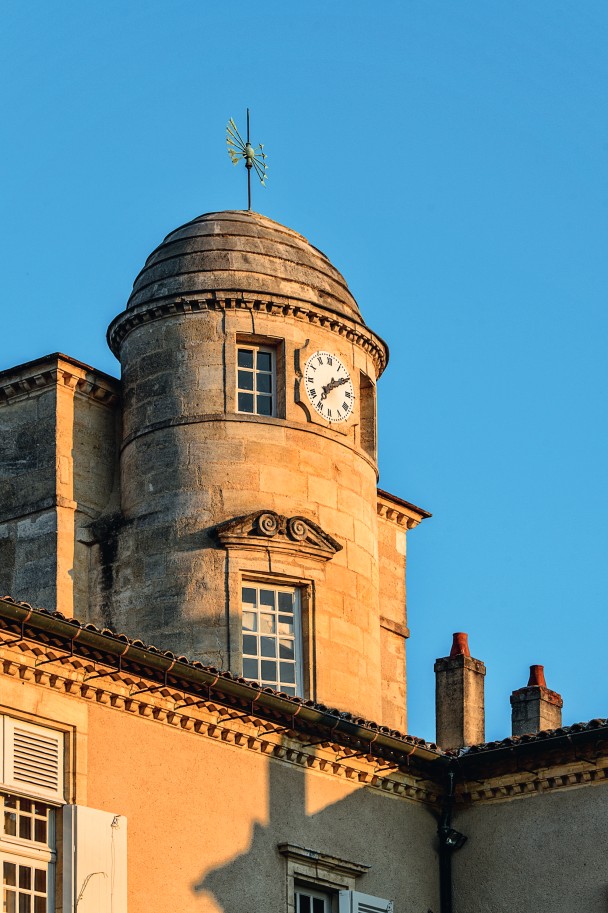
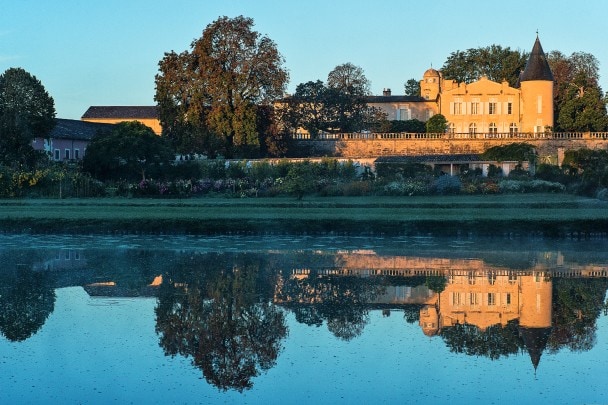
The VIRTUES OF LAFITE’S SITE, unchanged over the centuries, have not stood in the way of NEW IDEAS.
In many ways, Saskia’s rethinking of the closure system for Rieussec offers a profound insight into the spirit of Château Lafite. Innovation and change marked the period from the 13th century through the Rothschild family purchase in the 19th century. Why should re-examination and improvement stop at that point? Of course, the basics will always be there for the estate. Lafite’s vineyards occupy a truly privileged location. The gentle slope of its vineyards is formed by soils that some experts opine eroded from the distant Pyrénées. The structure is comprised of five different layers, ideal for the vines. Large gravel at the surface, smaller gravel beneath, limestone, riverbank soil (which holds water, important in drought years), and finally at a depth of 15-20 m, sand. These five layers promote deep root growth, forcing the vines to exert themselves for nourishment. As oenophiles know, struggle makes for superior wine, as it enhances concentration. Other factors favor the estate. The vineyards are bordered by forest, which not only harbors insect biodiversity, but moderates temperatures. There is one particularity not well known, even by Lafite devotees. Its parcel sits on the very northern edge of the Pauillac appellation, bordering on St. Estèphe. In fact, a small portion of the vineyard actually lies across that border but is entitled to be classified as Pauillac.
These virtues of the site, unchanged over the centuries, have not stood in the way of some new ideas. Since 2013, Lafite has been evaluating biodynamic methods. Although all of the estate’s wines are grown organically and the application has been submitted to be certified as such, the dictates of biodynamics go further. In lieu of conventional fertilizers, even the organic varieties, “teas” are confected from herbs and manure that has been buried in cow horns for weeks. Weeds are permitted to grow naturally between the rows of vines, promoting not only a healthy insect population but offering protection against mildew. Moon phases dictate activity in the vineyards. However mystical this all sounds, many estates around the world have adopted biodynamic rules. For Lafite, this is viewed as an experiment. A small percentage of the vineyard, 13 hectares, is now the laboratory. It is harvested and vinified separately. In blind tastings, conventional cuvées and the biodynamic cuvée have been found to be identical. No decision has been made on whether to expand the experiment.
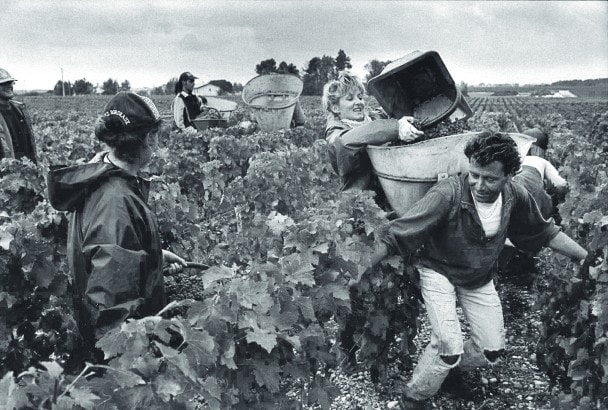
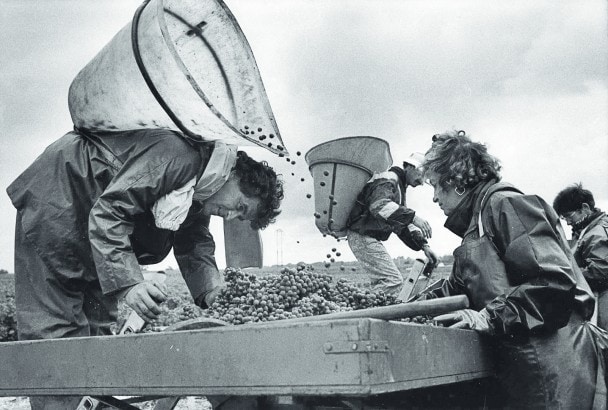
Château Lafite is a classic Bordeaux blend. For many years, it was comprised of 70% Cabernet Sauvignon, 15% Merlot, 15% Cabernet Franc. There have been exceptions, of course. The legendary 1961 Lafite was 100% Cabernet Sauvignon. More recent vintages have seen the Cabernet Sauvignon percentage rise to over 90%, Merlot under 10% and but a very small quantity of Cabernet Franc. In the cellars, the vinification methods vary with the grape. The Cabernet Sauvignon is fermented in wooden vats, which allows micro quantities of air to interact with the wine in order to soften the tannins. For the Merlot, the cuve is concrete, which promotes the aromas and freshness.
Essentially, all the grand names in Bordeaux have a “second wine”. The harvest is sorted with the finest grapes used for the Grand vin, and the remainder for the second wine. Lafite is no exception, offering a second wine under the name Carruades de Lafite. The sorting is done cluster by cluster.
The general practice among vintners in France is to purchase barrels from specialist suppliers. Lafite departs from the majority in that it has its own tonnerie for barrel production. This allows for the barrels to be constructed to the exact specifications of the estate. Keep in mind that there are many choices to be made in selecting barrels. The species, the source of the oak, and the degree of toasting of the interior are all vitally important and affect the final wine. For Lafite, 100% new oak barrels are used for each vintage.
Wine writers, by trade, are enthusiastic purveyors of adjectives. If there is one word that has defined Château Lafite’s style over the decades, it is “elegance”. In a world where the fashion has been bent into winning wine tastings, which seem to value power, concentration, and even elevated levels of alcohol, Lafite stands out with its confidence that refinement and balance matter more.

Toasting the interior of the oak barrels.
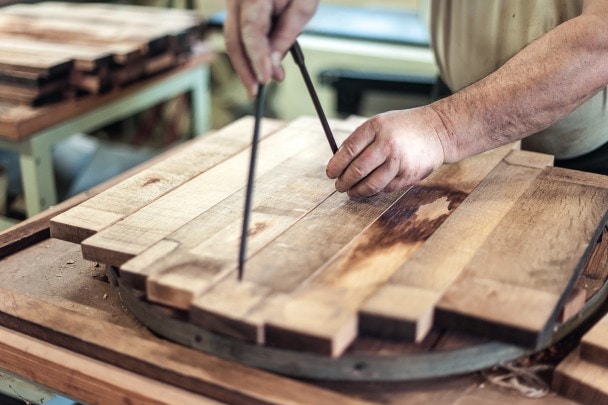
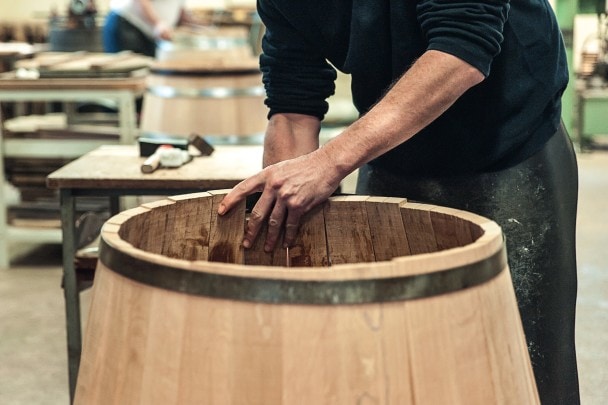
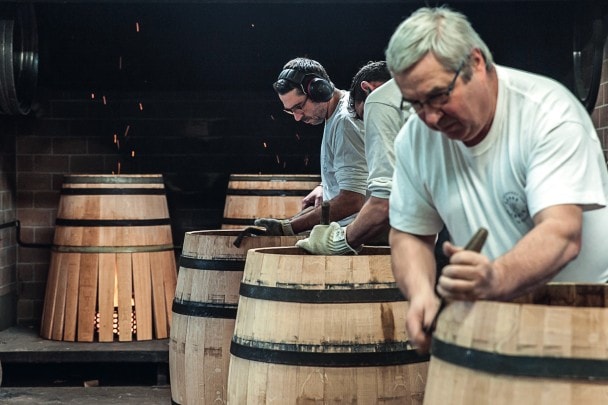
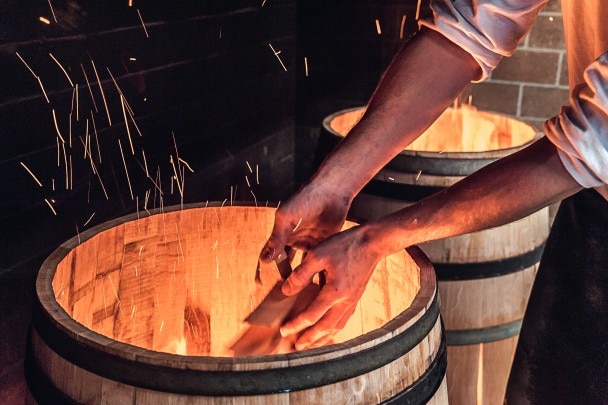
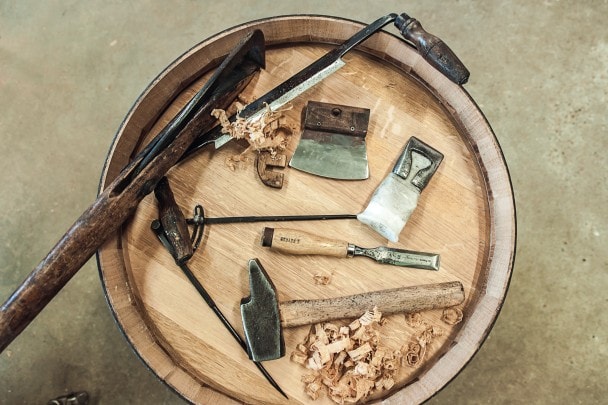
Today, LEADERSHIP of the family’s estates has passed to Saskia.
The family presides over two additional Châteaux. The first, Château Duhart- Milon, is also a Pauillac, with the majority of its vineyards located to the west of those of Lafite. The merit of Duhart- Milon’s wines was recognized in the 1855 classification as a fourth growth. As both are close to each other, Duhart-Milon is managed by the same technical team as Lafite. The second is located an hour and a half away by car in Pomerol, which often is referred to as the “Right Bank” even though it fronts a different river from the Médoc where Lafite is found. Pomerol is adjacent to the Dordogne; Lafite adjacent to the Gironde. This property is the highly regarded Château L’Évangile, which the family acquired in 1990. In common with most Pomerol, L’Évangile is an assembly dominated by Merlot (80%), the remain- der Cabernet Franc.
There is a common thread connecting Lafite with Duhart-Milon, L’Évangile, and Rieussec. The assurance that refinement, balance, and sophistication are more seductive than raw power.
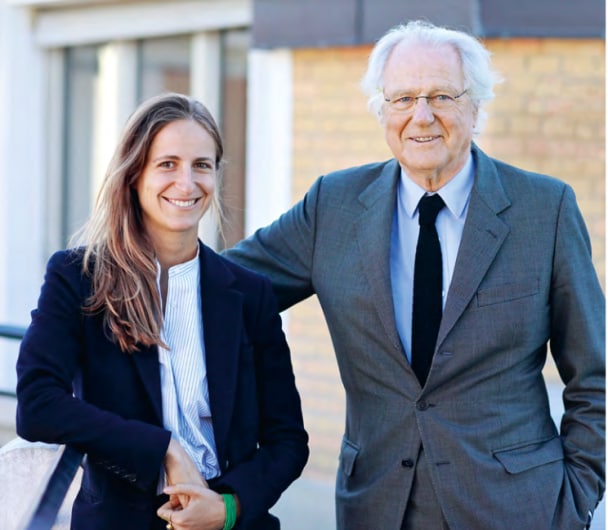
Baron Éric de Rothschild and his daughter, Saskia.
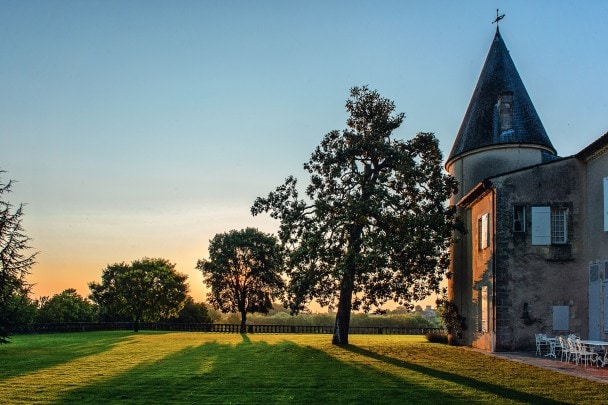
TASTING Notes
All wines tasted from the bottle as indicated. JSK (Jeffrey S. Kingston); GD (Dr. George Derbalian).
1953 LAFITE (TASTED 2005 AND FROM MAGNUM 2004 BY GD).
Perfect ripeness, fleshy, gorgeous bouquet and flavor intensity, amazing harmony, and elegance. It’s a darling Lafite that competes with the greatest of them.
1955 LAFITE (TASTED 2005 BY GD).
Less weight than the 1953, but has the unmistakable Lafite elegance and bouquet, 95 points.
1959 LAFITE (TASTED ON NUMEROUS OCCASIONS IN VARIOUS FORMATS BY GD).
One of the greatest Bordeaux of all time, and the most memorable Lafite Rothschild. Most recently tasted on June 22, 2016. Apart from the 1990 in regular size bottles, the 1959 Lafite is the perfect wine, 100 points. It is rich, fleshy, with a magnificent “Lafite” bouquet and flavor intensity. It seems to be on a timeless journey. The magnums, and two double magnums on separate occasions, were memorable, but equally sensational were the last regular size bottles.
1961 LAFITE (TASTED NOVEMBER 2021 AT THE CHÂTEAU BY JSK).
A legendary vintage. Cold temperatures persisted until the time of flowering in late May. Much of the Merlot was lost. However, the Cabernet Sauvignon was superb, leading to the decision to make the wine exclusively with it. Red fruit dominates, woven with classic cedar and mineral notes. The wine is miraculous as its fruit remains powerful, yet it is seemingly weightless on the palate.
1975 LAFITE (TASTED FROM MAGNUM IN 2011 BY GD).
A classic Lafite bouquet of sandalwood and graphite; the youthful tannins so characteristic of this vintage have melted and transformed into a round enjoyable fruity wine with a medium weight but fine flavor intensity.
1981 LAFITE (TASTED FROM BOTTLE AND MAGNUM IN 2005 BY GD).
Delicious medium weight, elegant, pure expression of the terroir, not a dense vintage but so satisfying.
1982 LAFITE (TASTED FROM BARREL IN 1983 AND FROM BOTTLE NUMER- OUS TIMES THEREAFTER BY GD).
From barrel, I have never experienced such a compelling rich mouth-filling Bordeaux. I wonder how the 1959 tasted at this same stage? The 1982 has gracefully aged into a fleshy style that is akin to vintages of Lafite like the 1953 and 1959.
1983 LAFITE (TASTED 2004 BY GD).
A classic Médoc/Pauillac vintage; very successful at Lafite with nice flesh, classic Lafite bouquet, good weight.
1986 LAFITE (TASTED NOVEMBER 2021 AT THE CHÂTEAU BY JSK).
This was a Bordeaux vintage that was quite tannic upon release, forecasting a long wait before drinking. Those predictions turned out to be incorrect as the tannins rounded and softened rather rapidly. Delightful to drink now. Spice and currants in the nose. Waves of black fruits on the palate mixed with pencil, cedar and lovely oak. The balance and finesse are extraordinary. 70% Cabernet Sauvignon, 15% Merlot, 15% Cabernet Franc.
1987 LAFITE (TASTED OCTOBER 2021 FROM THE JSK CELLAR BY JSK).
An overlooked vintage as the market focused on the heralded ‘86s that preceded it. This wine seduces with its elegance and balance. Aromas of violets, pencil, minerals, and a subtle hint of vanilla. Soft supple fruit on the palate. Magic with its improbable blend of power and weightlessness. Fully mature now and a gem.
1989 LAFITE (TASTED JANUARY 2022 FROM THE JSK CELLAR BY JSK).
Seductive. A lovely black fruit nose laced with graphite and violets. Soft but powerful on the palate. Tannins completely resolved. Blackberry cobbler, currants, cedar, whiff of tobacco leading to a lovely finish with fruits and a hint of cinnamon. Perfect balance. Wine cannot be more elegant and balanced than this.
1990 LAFITE (TASTED JUNE 2016 BY GD).
A perfect Lafite to enjoy with refined round ripe tannins, is gaining weight and seamless fruit. One of the best vintages!
2000 LAFITE (TASTED NOVEMBER 2020 BY GD).
Concentrated, needs another 5 to 10 years to show all its greatness, powerful mouth filling.
2010 LAFITE (TASTED AT THE CHÂTEAU IN 2011 FROM BARREL BY GD).
Majestic power and elegance, concentrated fruit, long future ahead.
2001 L’ÉVANGILE (TASTED NOVEMBER 2021 AT THE CHÂTEAU BY JSK).
80% Merlot, 20% Cabernet Franc. Another overlooked vintage as it followed the landmark 2000. Deep purple color. Ripe plums, black fruits, prunes married with minerals leading to a round lush classic Pomerol texture and a beautiful soft finish.
2019 RIEUSSEC (TASTED NOVEMBER 2021 AT THE CHÂTEAU BY JSK).
Rich and deep. A long life ahead of it. Impressive weight in the mouth. Dances with mango and butter flavors, perfectly backed by fresh acids.
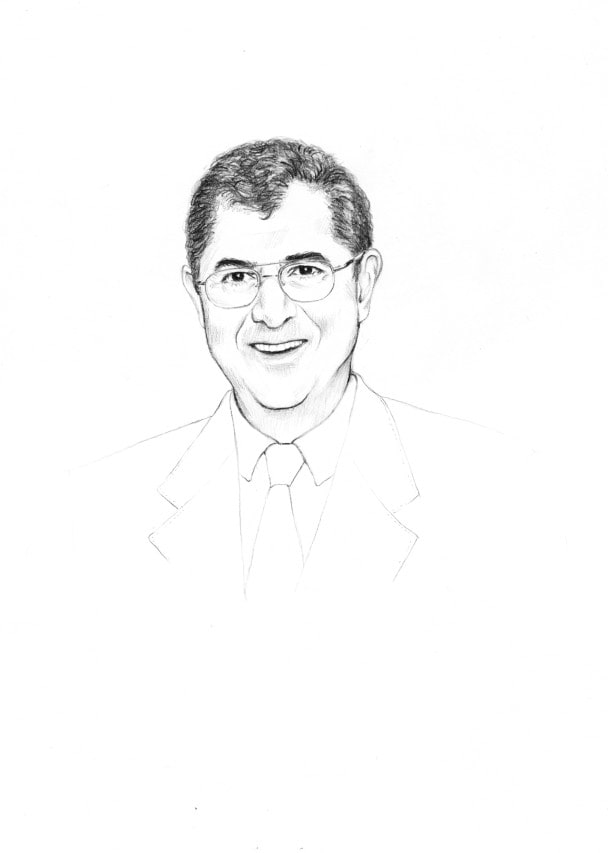
DR. GEORGE DERBALIAN
Dr. George Derbalian is the Lettres du Brassus wine expert. Dr. Derbalian is the founder of Atherton Wine Imports, located in northern California. Not only has he become one of the United States’ premier importers of fine wines, but he has acquired a well-deserved reputation as one of the leading and most respected wine connoisseurs and expert tasters in the world. Each year, Dr. Derbalian travels the wine circuits of Europe and the United States, meeting with wine producers, owners of the finest domains, maîtres de chai, and other key figures in the world of wine. Throughout the course of each year, he tastes literally many thousands of current production and vintage wines.
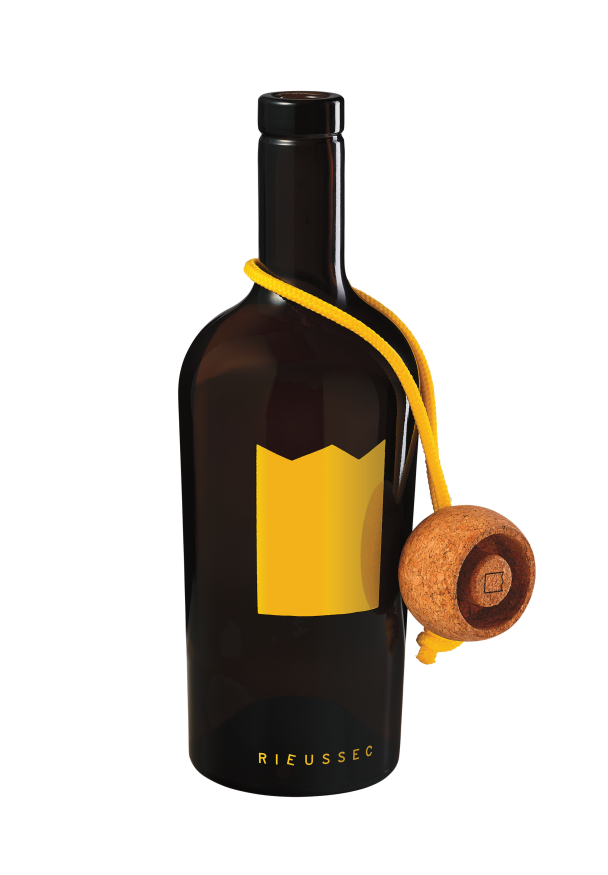
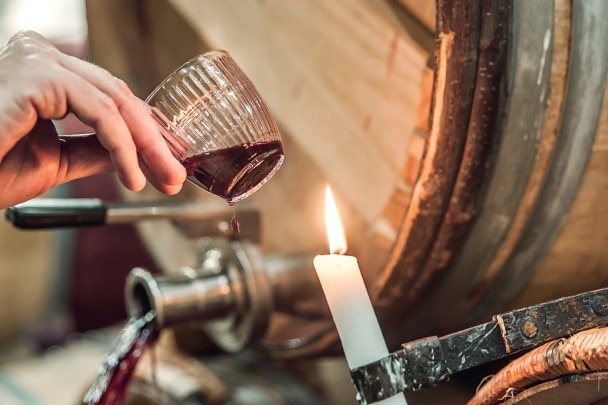
Other issues
Don't miss the latest issue
Sign Up for New Releases

